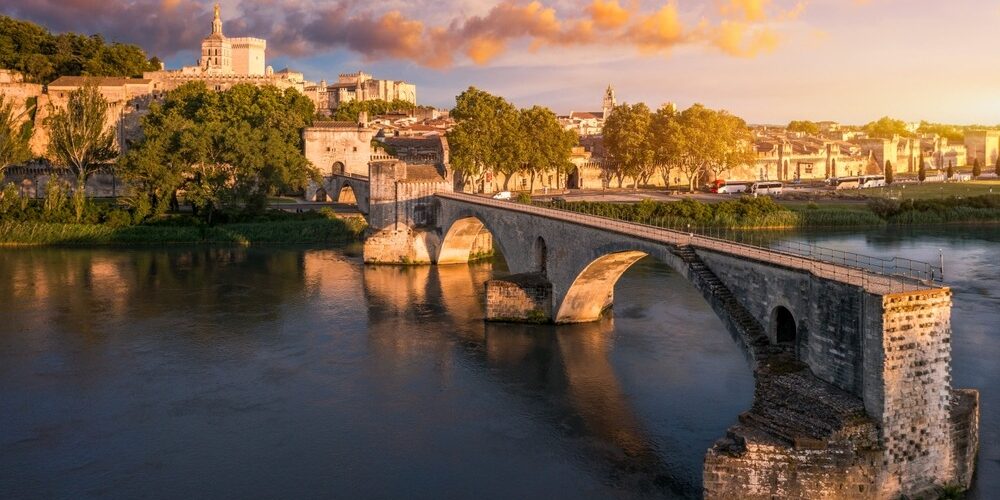Exploring the Hidden Treasures Along the Rhône River
Winding its way through the heart of southeastern France, the Rhône River is more than just a scenic waterway—it is a lifeline that connects a chain of culturally rich, historically significant, and breathtakingly beautiful destinations. While many travelers are drawn to well-known cities like Lyon and Avignon, those willing to explore deeper will uncover a tapestry of lesser-known gems that offer just as much charm, authenticity, and allure. In this blog post, we spotlight the lesser-known tourist destinations along the Rhône River that promise to enchant every curious traveler.
Tournon-sur-Rhône: Vineyards, Views, and Vintage Rails
Nestled in the Ardèche region and directly across the river from Tain-l’Hermitage, Tournon-sur-Rhône is a charming riverside town surrounded by rolling vineyards and granite hills. The 16th-century Château de Tournon now hosts a museum that delves into local history and viticulture. A ride on the vintage steam train, Le Train de l’Ardèche, offers panoramic views of the Doux Valley, winding through wild gorges and pine forests—an unforgettable off-the-beaten-path adventure.
Viviers: A Time Capsule of Medieval Splendor
Often overlooked in favor of larger cities, Viviers is a tiny, tranquil town that boasts a deeply preserved medieval core. Visitors can wander through its narrow cobblestone lanes, discover the 12th-century Saint-Vincent Cathedral, and enjoy sweeping views of the Rhône from the upper town. Its understated charm, complete with Renaissance mansions and quiet courtyards, provides a glimpse into an older, quieter France that has changed little over the centuries.
Vienne: Roman Relics and Jazz Rhythms
While not entirely unknown, Vienne still flies under the radar compared to other French Roman cities. Once a major Roman outpost, it is home to remarkably preserved ruins, including the Temple of Augustus and Livia and a massive Roman theater that still hosts performances—most notably the renowned Jazz à Vienne Festival each summer. The city’s layered past, combined with its vibrant arts scene, makes it a must for history lovers and music aficionados alike.
Arles-sur-Tech: Monastic Calm in the Pyrénées-Orientales
Not to be confused with the larger city of Arles in Provence, Arles-sur-Tech is a hidden jewel nestled in the foothills of the Pyrenees, where the River Tech (a tributary connected via historical trade routes) links to the Rhône. Its Benedictine abbey, founded in the 8th century, houses a mysterious “Sainte Tombe”—a stone sarcophagus said to never run dry of water. Surrounded by lush countryside and mountain trails, it’s an ideal escape for spiritual seekers and nature lovers.
Beaucaire and Tarascon: Twin Towns of Forgotten Majesty
Located opposite one another on either side of the Rhône, Beaucaire and Tarascon are sister cities that boast impressive architecture and riverside ambiance with far fewer crowds than neighboring Avignon or Nîmes. Beaucaire’s annual medieval fair and riverside château evoke the days when it was a vital trading port. Across the bridge, Tarascon’s fortress—Château de Tarascon—rises dramatically above the river, one of the best-preserved medieval castles in France, with sweeping views from its ramparts.
Pont-Saint-Esprit: Gateway to the Ardèche Gorges
This town, named after its historic 13th-century bridge, was a strategic crossing point over the Rhône and is now a quiet base for those looking to explore the nearby Ardèche Gorges, often called the “Grand Canyon of Europe.” Pont-Saint-Esprit is home to small museums, riverside cafés, and centuries-old architecture that rewards slow, thoughtful exploration. The surrounding region is ideal for kayaking, hiking, and caving.
La Voulte-sur-Rhône: Fossils and Fortresses
La Voulte-sur-Rhône combines industrial heritage with prehistoric intrigue. The town’s château dominates the skyline, while nearby fossil beds have yielded rare marine specimens from the Jurassic period. It’s an excellent stop for geology and archaeology enthusiasts and provides scenic riverfront walks that showcase the natural beauty of the Ardèche.
Aigues-Mortes: Salt, Sand, and Walled Beauty
Though technically located in the marshy Camargue region near the Rhône Delta, Aigues-Mortes is connected to the river via canals and makes an intriguing detour. This walled medieval town, originally built as a port for the Crusades, is surrounded by vivid pink salt flats and briny wetlands home to flamingos. Its ramparts offer panoramic views over the landscape, and its grid-like streets hide artisanal shops and atmospheric cafés.
Montélimar: The Sweet Taste of Nostalgia
Best known as the nougat capital of France, Montélimar sits just west of the Rhône and offers a delicious detour for sweet-toothed travelers. Beyond the confections, it features the Château des Adhémar, a hilltop castle that hosts contemporary art exhibits. The tree-lined Allées Provençales evoke a laid-back Provençal feel, making Montélimar a delightful afternoon escape.
Bagnols-sur-Cèze: Artistic Spirit Along the Tributaries
Although it lies slightly off the main Rhône channel, Bagnols-sur-Cèze is fed by its waters and has developed a cultural identity steeped in art and tradition. The town’s Musée Albert-André, housed in a Renaissance town hall, offers one of the most impressive modern art collections in rural France. Surrounding Romanesque churches and lively markets make this a lesser-known destination for cultural travelers seeking authenticity.
The Rhône’s Quiet Allure
While many flock to the Rhône River for its marquee cities and Provençal landscapes, its quieter towns and villages hold a different kind of magic—one of undisturbed heritage, gentle hospitality, and scenic calm. These lesser-known destinations beckon travelers to linger, explore, and connect with the soul of southeastern France beyond the guidebook covers. Cruising or driving along the Rhône reveals these quiet marvels like pearls on a string—each with its own story, flavor, and rhythm. For those who believe that travel is about discovery, the hidden gems of the Rhône River await with open arms.


































